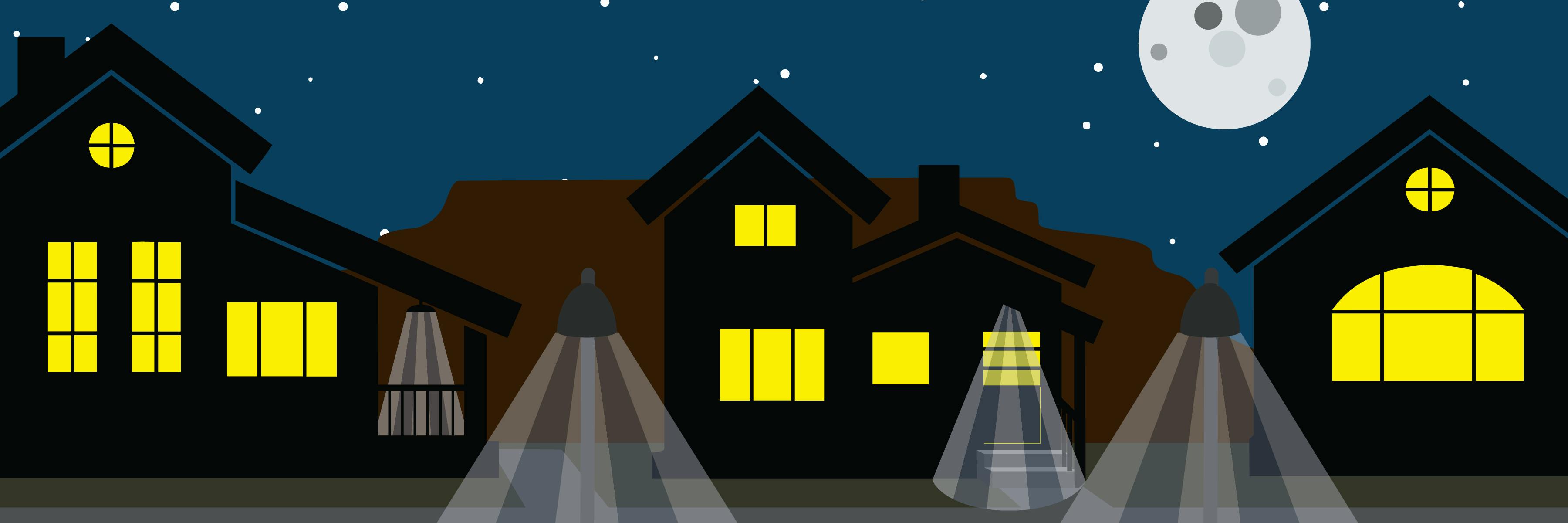FAQs
Why should I care about light pollution?
Light pollution creates an unnatural disruption to day and night cycles, which leads to negative effects for people and the natural systems around us. Excessive lighting can trespass onto neighboring properties and cause glare, which makes it difficult for our eyes to see. Additionally, excessive lighting wastes electricity and can disrupt sleep cycles, migration patterns, and plant growth. Moab's outdoor lighting code sets standards for shining light where it is needed while limiting the potential negative impacts.
Do dark skies mean dark streets?
No, the outdoor lighting code update intends to direct light where it's needed, which is on the streets, parking lots, sidewalks, and other areas where we travel. Directing light down where we need it means it isn't in the sky where we don't need it.
Do I have to change my light fixtures?
Whether you need to retrofit your fixture will depend on the style of light fixture you have. The guidelines on the Engage Moab Dark Sky page are a good place to start. For example, ensure the lights are not shining in an upward direction or towards neighbors. The code has illustrations of light fixture types that are consdered fully shielded. Dark Sky International also has a useful home light audit to get more in-depth. As always, the definitive source of information is Moab Municipal Code.
Does the outdoor lighting code allow safety lighting?
Yes, the right direction and level of lighting are important for safety. Extremely low lighting or excessive glare can make it difficult to see, for example. Learn more on the Federal Highway Administration and Dark Sky websites.
Does the code allow holiday lighting?
Yes, holiday or seasonal lighting may be displayed from October 15-January 15 and may remain on until 10 PM. It may remain on later if it does not cause nuisance glare [17.09.068(C)(2)(c)].
How do I measure the brightness and color of my lights?
The easiest way to check the brightness and color of lights is to look at the "lighting facts" on light bulbs when you purchase them. As you replace outdoor bulbs, choose ones that are 3000K or warmer in color ("warm white"). Chose the lumens that are appropriate for the purpose.
Is financial assistance available to switch out my non-compliant fixture?
Yes, the Outdoor Lighting Retrofit Assistance Program offers assistance for residences.
What is nuisance lighting?
Nuisance lighting is illumination or intermittent glare that is directed off the property where it originated. An example of nuisance lighting would be a flood light or a holiday light projector on a neighboring property that is pointed toward your house.
How do I report light trespassing onto my property?
First, check the light to see if it is following the basic outdoor lighting standards. Not all visible light is a violation of city code. If you notice a violation, then report it to Moab City Code Compliance.
How do a report a streetlight that has gone out?
The city owns decorative fixtures and a few others around town. If you think a city-owned light is out, contact Moab Public Works.
Most of the "cobra head" streetlights in Moab are owned by our utility provider, Rocky Mountain Power. To report one of these lights, visit their reporting form.
How do I request a streetlight to be removed?
Streetlights are required for safety, so removing them is rarely possible. It is possible a shield may be added to the streetlight. Contact Moab Sustainability to request one. You may contact Moab Public Works to request an evaluation.
Is this initiative expensive?
Many fixtures that meet code are no more expensive than other lights on the market. The city has been phasing in down-facing lighting since 2019, which allows resident and city-owned lights to be converted as they naturally need new bulbs or replacement fixtures. This extended timeline, from 2019 to 2029, also allows for planned budgeting for any changes that are needed.
Additionally, some lighting updates save enough energy that the update saves money over time. For example, replacing the cobra head-style streetlights in the city could have a payback period less than five years.
